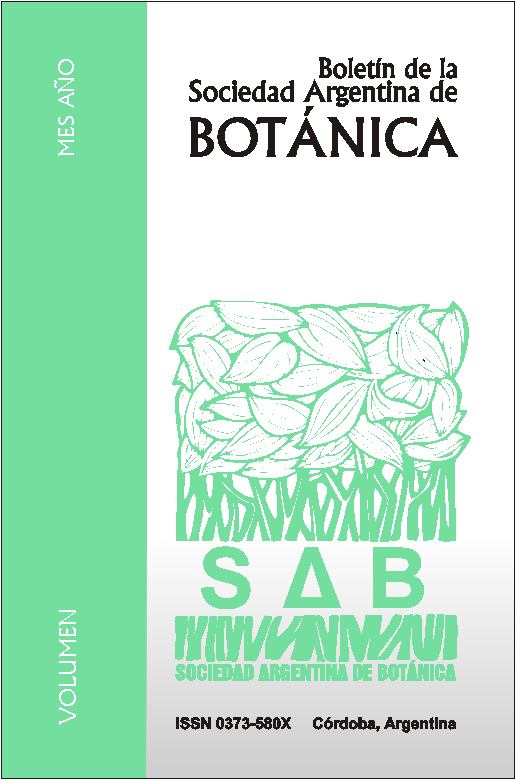Reproductive biology and cytogenetics of Distichia muscoides (Juncaceae).
DOI:
https://doi.org/10.31055/1851.2372.v51.n1.14422Keywords:
Seed viability, dioecy, stigmatic receptivity, chromosome number, fluorescent banding, Juncaceae.Abstract
Reproductive biology and cytogenetics of Distichia muscoides (Juncaceae). The genus Distichia Nees & Meyen (Juncaceae) has three species from South America, and the most widely distributed is Distichia muscoides Nees & Meyen. This dioecious species is the main component of the wetlands, an important ecosystem of the high Andean region. In this work, different biological aspects of D. muscoides were studied: 1) pollen viability through indirect staining techniques; 2) the stigmatic receptivity through hydrogen peroxide test; 3) the viability of the seeds; and 4) cytogenetic studies using fluorescent chromosome banding CMA/DA/DAPI. The results show that staminate flowers of D. muscoides have pollen with a high percentage of viability (100%); pistillate flowers reach the stigmatic receptivity once stigma branches develop their maximum length (4 mm) and remain in this state for at least two days. The number of ovules per ovary is 34, and the number of seeds per fruit is 25. The seeds germinated since day 15, showing 92% of viability and, an average on germination time of 18.4 days. The species has 2n = 80-84 chromosomes and the fluorescent banding showed two pairs of terminal bands CMA+/DAPI-, associated with nucleolar organizer regions (NORs). Karyological and reproductive data for this genus are here reported for the first timeDownloads
Published
Issue
Section
License
Provides immediate and free OPEN ACCESS to its content under the principle of making research freely available to the public, which fosters a greater exchange of global knowledge, allowing authors to maintain their copyright without restrictions.
Material published in Bol. Soc. Argent. Bot. is distributed under a Creative Commons Attribution-NonCommercial-ShareAlike 4.0 International license.





